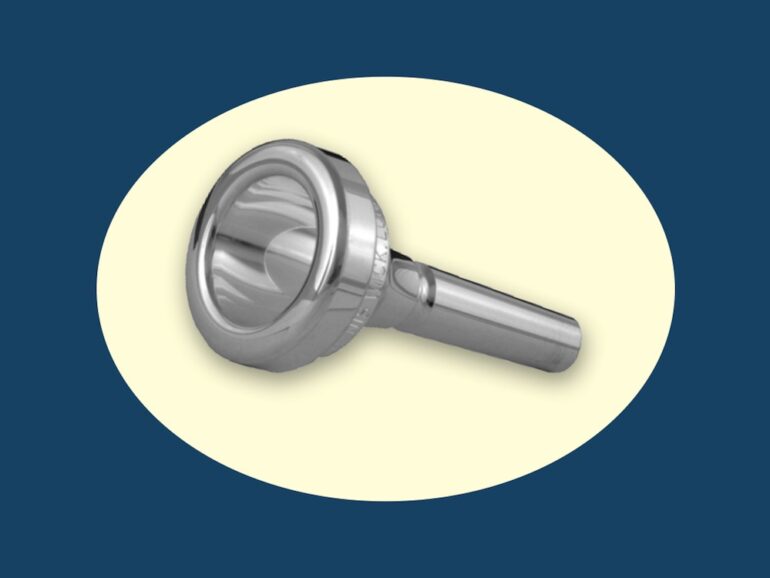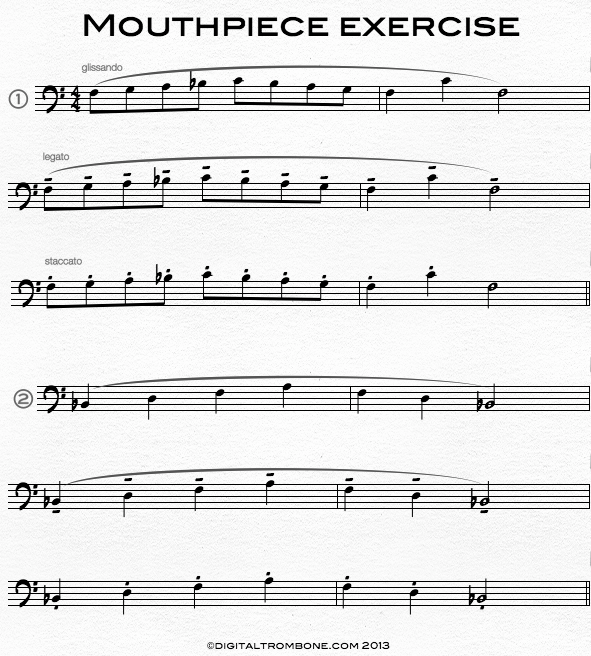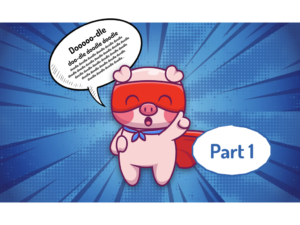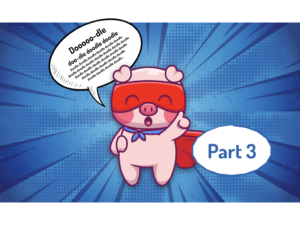
Don’t hold back on air
Many brass players have problems playing smooth legato lines and keeping the airflow constant. This simple exercise will help you overcome such issues. It is also a comfortable mouthpiece warm-up. The goal is to let the air flow freely and without interruptions when you change notes, regardless of whether you play glissando or legato.
Staccato on mouthpiece
When playing staccato you do stop the airflow between notes. Here you should focus on not changing the embouchure or letting tensions of any kind build up. Playing in pitch on the mouthpiece can be hard, and doing it while playing staccato is really hard, so focus on that too. When you can play a staccato melody with perfect intonation on the mouthpiece alone, you will have to struggle to play out of tune on the trombone!
Checklist:
- Inhale and exhale freely
- Smooth attack and same dynamics on all notes
- The only difference between glissando and legato is a very small, rapid tongue movement!!!
- Make sure that your tongueing is as discreet as possible. I like to compare it to rapidly moving your finger through water pouring out of a water tap. This is what your tongue should do with the airstream!
- Only use the tongue to help control the attack – do not build up air pressure behind the tongue before the attack.
- Pitch, pitch, and pitch. Don´t give up if it feels impossible to play the staccato part in pitch in the beginning.
- Relax! If you have to put up a fight to make a sound on the mouthpiece, you either got concrete instead of botox at your last treatment, or your airflow is not totally in place. You will know which condition applies best to you.
I recommend that you start this exercise in a comfortable mid-range (around F or D below keyhole C), and work your way both up and down by half steps. Free sheet music with the trombone exercise below.
Good luck
Anders
5 Comments
-
I think this is terrific! I have used a good number of exercises, but this will give me something to work at. I had a teacher in my past training that told me”If you cannot play it on your mouth piece you cannot play it on your horn” It has always left me with a lot of work. This excercise will be a great deal of help to me. Thank you and thank you again. Carole J. Paul
-
Carole, thanks for your kind words! Hope it helps you improve your playing!
Anders
-
It’s a very good exercice, I added to my daily routine. Thank, Il love your advice!!!
Pierre -
Nice to hear from you, Pierre! Keep your horn busy and let me know how it works out for you!
Anders
-
Very Good!! Thank you. For tips.





